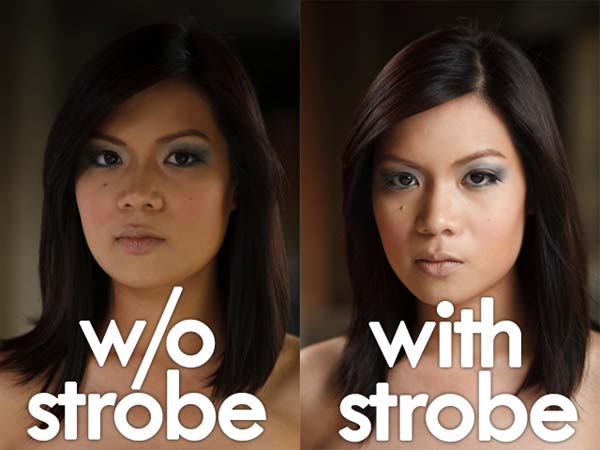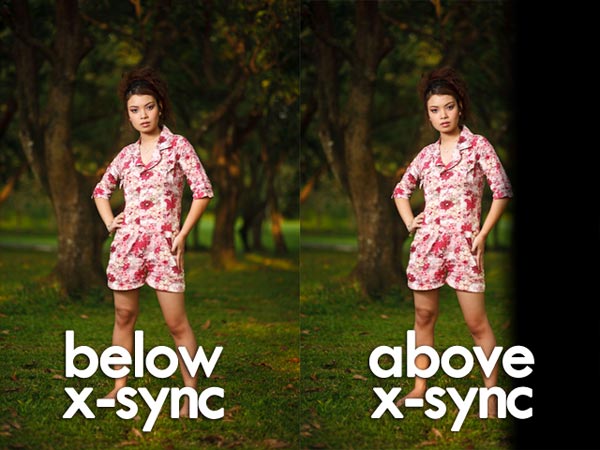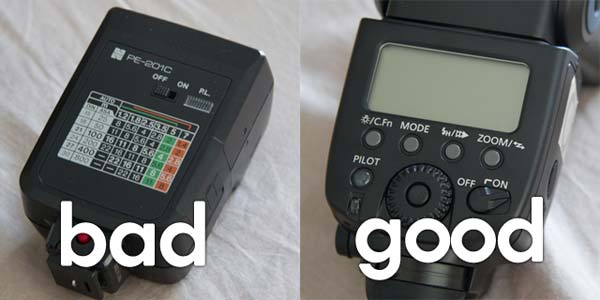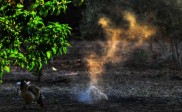Strobist Photography Basics
What is a Strobist?
A strobist is a photographer who uses off-camera flash (OCF) to take pictures. Instead of the usual pop-up flash or speedlight attached on top of the camera, strobists use OCF to achieve more pleasing and more dynamic photographs. This is a result of the placement of the light, since it is not limited to one direction, i.e. the top of the lens. With off-camera flashes, you can experiment to achieve better results.
Strobist Gear

First, get a camera that has a good x-sync speed. Sync speed is the threshold at which the shutter can still get the light from the strobe without the black bars . 1/200 is good (most cameras) but 1/500 is better (Nikon D40) . For example, let’s say that the exposure of a scene is 1/200, f/8, ISO 100. You want to have a shallow depth of field by using a lower f-stop, so you bring the aperture to f/5.6. This means that you must use a faster shutter speed to compensate for this change in aperture. However, you’re at the limit already (1/200) and going overboard means you won’t get the light coming from the flash. And that’s why it’s better to have a higher x-sync speed. You get more flexibility resulting in more creative leeway.

Second, you’ll need a camera flash that has manual control for the power output. Most flashes by Canon and Nikon have this feature. You can set the flash power to full, 1/1, or to the lowest setting which is 1/128. So, why do we need this? Let’s say that you’re using a flash that has no manual control. The output of the flash is always at 1/1. You’re going to take a portrait of a model. You have already figured out the perfect exposure and the strobe light is the only element missing. You press the shutter and the strobe goes off, but the picture is overexposed. You go to flash and change the settings. But wait! It has no manual control. So you go back to your camera and increase the shutter speed, use a narrower aperture or decrease the ISO. But, sometimes, you can’t change any of those settings anymore. You’re at the x-sync speed already, f/8 would make the background details clear, or ISO 100 is the lowest ISO possible for your camera. Having the option to change the output of light via manual control is the same as having a better x-sync speed. You get more options. And more options mean more creative juices flowing.

Third and last, you might want to get accessories. This is not necessarily needed but it will greatly aid you in getting the perfect shot. Some examples are light stands, modifiers, reflectors, snoots, gobos, etc. You don’t need to buy all of these, but if you’re going to get some, consider buying a light stand and a light modifier (umbrella or softbox).
Why be a Strobist?
Why be a strobist? Instead of using just your camera, you have to lug around a light stand and a flash. You have to carry extra weight. Sometimes, you even have to get someone to assist you since the wind might knock out your light setup, when shooting outdoors. What I’m saying is that you have to put more effort in taking the shot when you can just press the shutter without the use of strobist gear.
Better pictures. That’s the reason why most people get into using strobes. Light is the language of photography. Without light there are no photos. With strobes, you add more light to the picture, and thus will have more control over the final product. It’s like knowing more words when writing a novel. Adding a single light can introduce drama in a picture. It can show more detail or hide some. The extra work you put into making the shot, greatly affects the output.
Getting your strobist gear is just the beginning of the journey. Wait for the next article where I’ll show you why and how to use strobes. Keep on shooting and embrace the light!
Here are some examples of strobist photography

Photo by evan hunter

Photo by Doha Sam

Photo by A4gpa

Photo by Corinne Alexandra




Thanks for this great blog about Strobist Photography Basics .thank you for the Info.
Excellent Post. I never knew what strobist was yet I was fully aware of OCF. Unusual term strobist, hope to try some in 2011.
Well, that explains that. Thanks. 🙂
Hi, can you please further explain what an x-sync speed means. Thanks
Thanks for the very nice information.. but why not use the other flash (PE201C)?